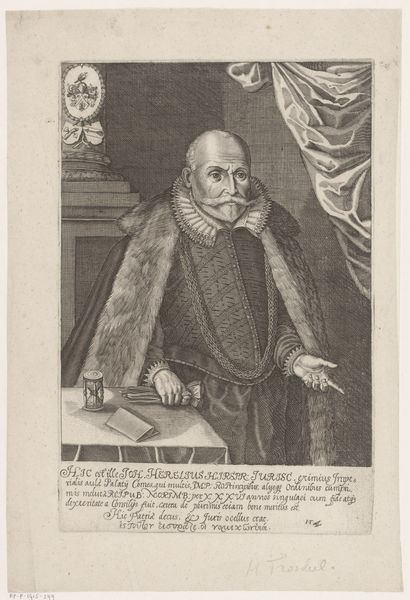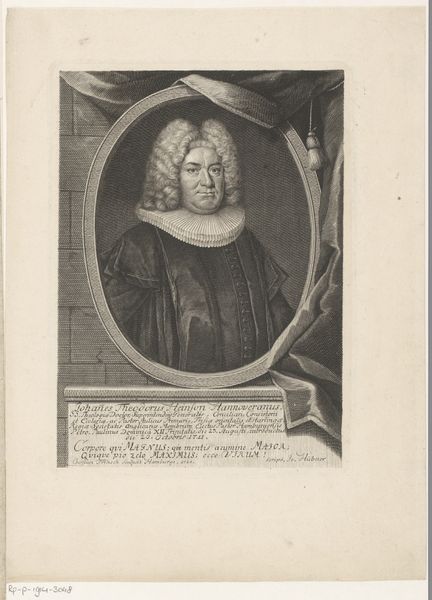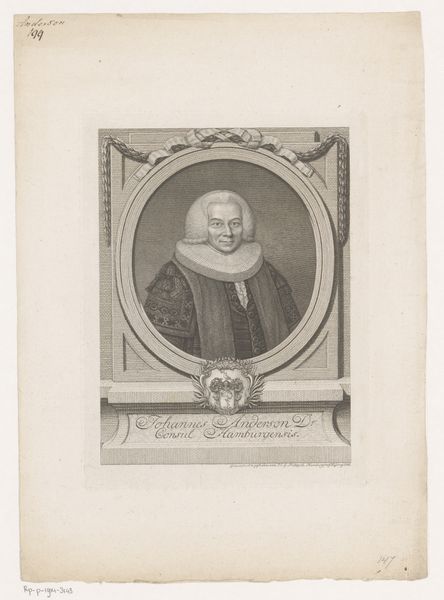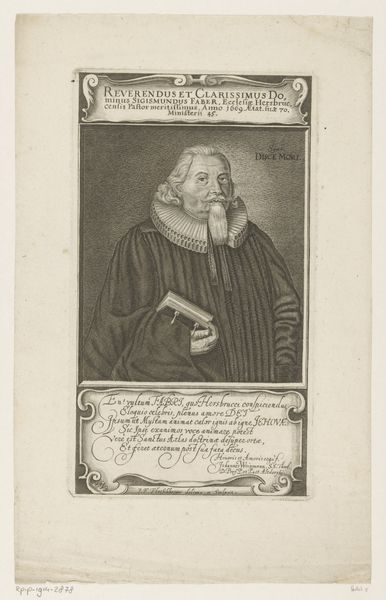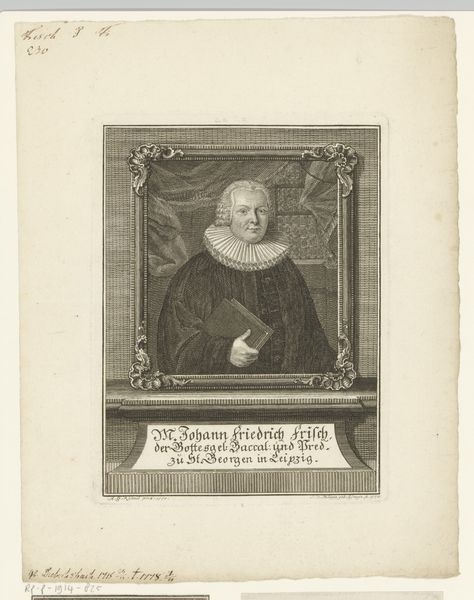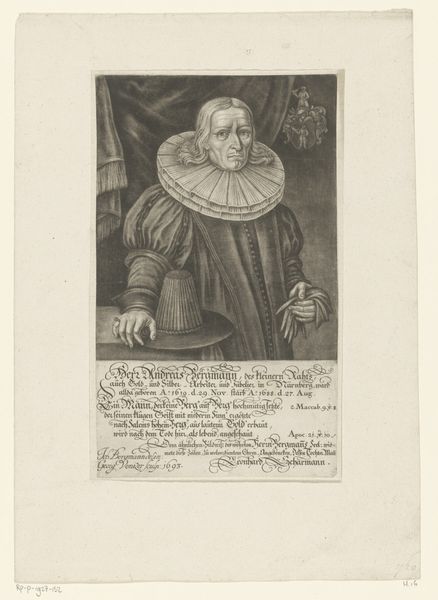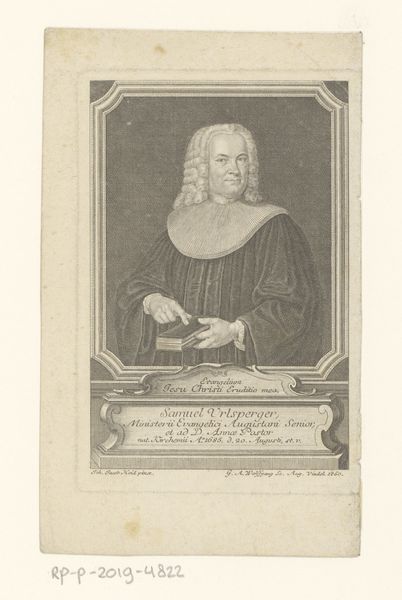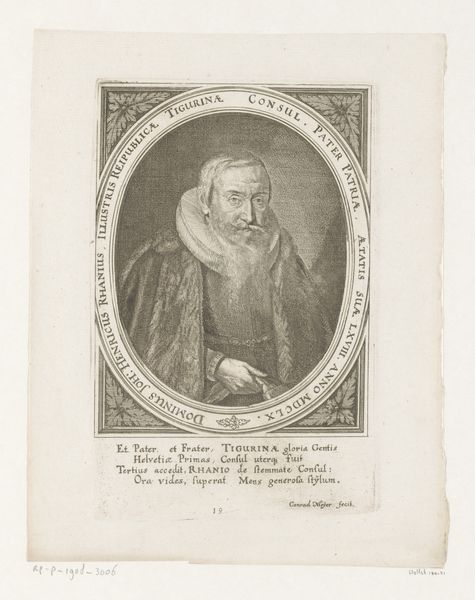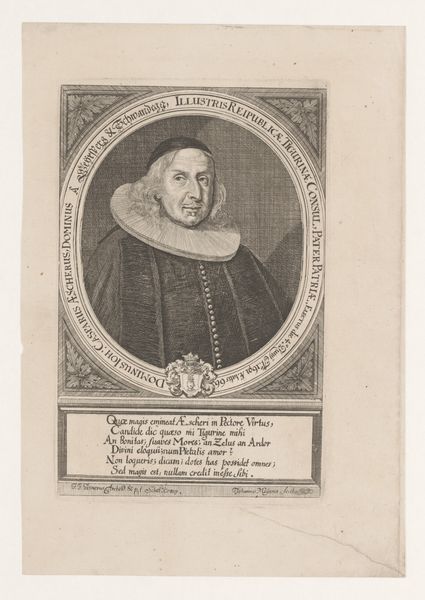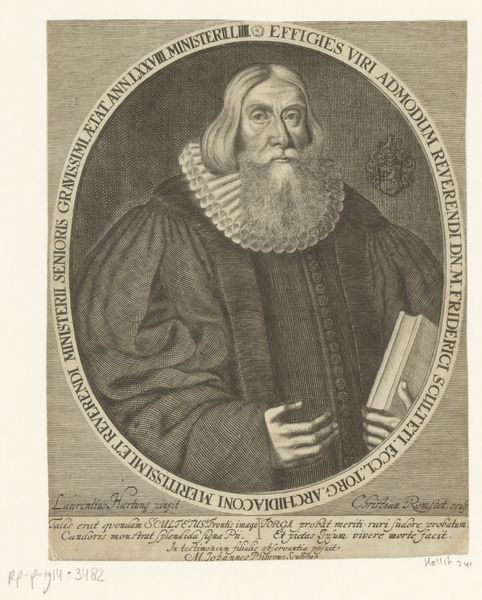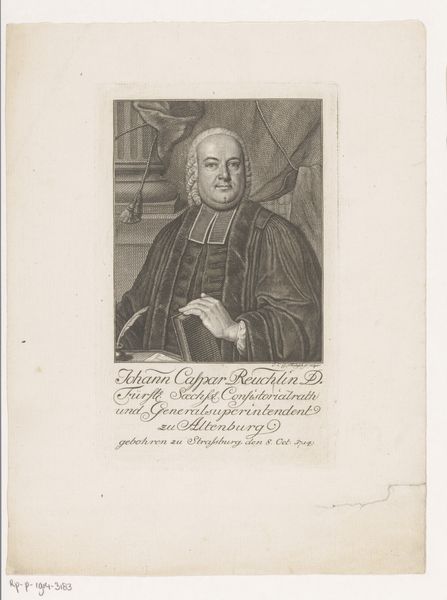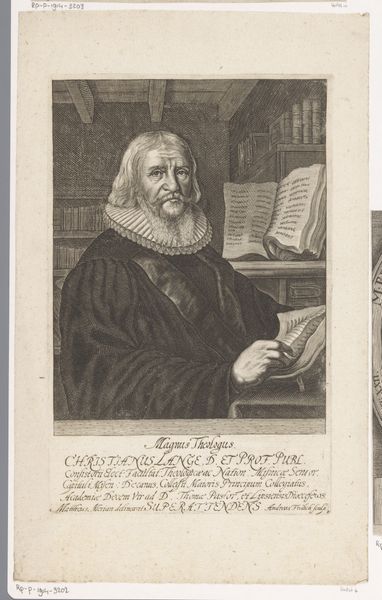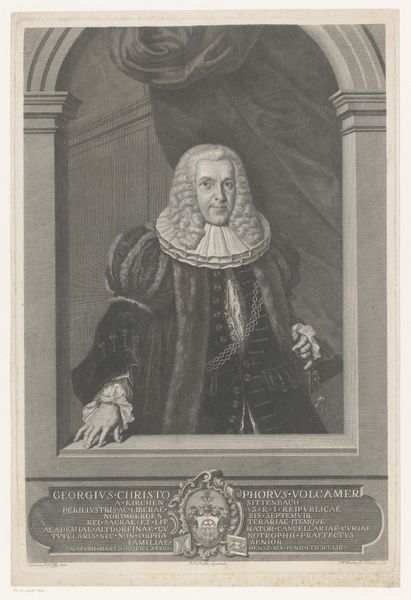
print, engraving
#
portrait
#
baroque
# print
#
history-painting
#
academic-art
#
engraving
#
realism
Dimensions: height 187 mm, width 126 mm
Copyright: Rijks Museum: Open Domain
Editor: This is a portrait of Johann Georg Treu by Georg Lichtensteger, an engraving from 1741. It's a very formal depiction; the man looks quite solemn and dignified. I'm curious, what do you see in this piece beyond just a representation of a person? Curator: Well, this portrait, reproduced as a print, tells us a lot about the social and cultural landscape of the 18th century. Printmaking allowed for the wide dissemination of images, and portraits like this served to solidify the status and authority of figures like Johann Georg Treu. Note how he’s holding the book, a symbol of learning and piety, and the imposing drapery in the background. Editor: So it's less about capturing his likeness and more about projecting an image? Curator: Exactly. Consider the institutions at play: Lichtensteger was commissioned to create this print, which then circulated within a specific social network, likely amongst Treu's peers and followers. The print becomes a tool for reinforcing social hierarchies and propagating a specific view of Treu as a learned and respectable member of society. Look at the details of his clerical attire, the carefully rendered wrinkles—realism serving an ideological purpose. What does that tell you? Editor: That the image wants to inspire a sense of trustworthiness, and reverence perhaps, in the viewer. So it's performing a function, beyond mere aesthetics. Curator: Precisely. These images played an active role in shaping public perception. It highlights the interplay between art, power, and public image. The context provides another dimension to a simple image of a person. Editor: That's a fascinating way to look at it; I will definitely reconsider prints I find in museums. Curator: Yes. It’s a window into the past!
Comments
No comments
Be the first to comment and join the conversation on the ultimate creative platform.

